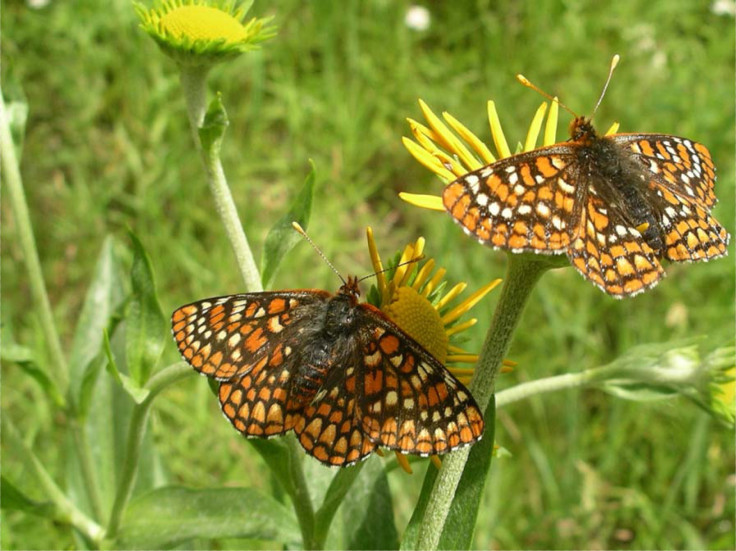New Mexico Butterfly On 'Brink Of Extinction' Proposed For Protection After 20 Years
KEY POINTS
- There have been several petitions seeking the species' protection
- The first petition was filed way back in 1999
- The FWS has now proposed the species to be listed as "endangered"
The Sacramento Mountains checkerspot butterfly has finally been recommended for an "endangered" status after decades of petitions. Researchers found only a handful of the species in their latest survey.
The move from the U.S. Fish and Wildlife Service (FWS) came after two petitions seeking protection for the species were denied in the last 20 years, the Center for Biological Diversity noted in a news release.
The first one was filed in 1999, following which the FWS proposed to list the species as endangered due to threats such as "habitat loss, fragmentation, degradation, drought, wildfire and overcollection." However, the proposal was withdrawn in 2004 and in 2009, the agency denied another listing petition.
Unfortunately, "only eight butterflies and no larval tents could be found" in the latest survey, the Center noted.
"This pretty little butterfly is on the brink of extinction because of delay and politically driven decisions by the U.S. Fish and Wildlife Service," Noah Greenwald, the endangered species director at the center, said in the news release. "If the agency had protected the butterfly after our 1999 petition, there would certainly be more than eight butterflies left today."
In the proposal, the FWS noted the threats being faced by the Sacramento checkerspot butterfly, from nonnative plants to climate change and "an altered wildfire regime." The drought in New Mexico, which has worsened since 2009, proved harmful for the species' habitat conditions, as well as the plants that they rely on, according to the agency.
The Sacramento Mountains checkerspot butterfly lives in just a few meadows among the forested mountains of SE NM. Drought, overgrazing, and invasive plants are all affecting the native host plants that these butterflies count on. https://t.co/nByF8IDaBu
— U.S. Fish and Wildlife (@USFWS) January 24, 2022
📸: Julie McIntyre pic.twitter.com/wOZVfAHz9M
"Additionally, recreation on the Lincoln National Forest has increased in recent years," the FWS noted, adding that the "heightened concern" prompted a status review of the species in January 2021.
"On March 1, 2021, we received a petition from CBD to list the Sacramento Mountains checkerspot butterfly as endangered with critical habitat," the FWS added in the proposal. "At that time, our analysis was already underway, and we included the information provided in the petition in our analysis of the species' status for consideration in this decision."
Biologists at the agency and other experts looked at available data on the species and their report determined that the species' "small, isolated populations" were threatened by various factors, the FWS noted in a news release. According to the agency, designating a critical habitat for the species is "prudent" although it has yet to make a "critical habitat determination at this time."
"With nowhere else to go, this rare butterfly is now facing a high risk of extinction," said Amy Leuders, FWS service regional director.
"I hope it doesn't come to pass, but this butterfly could become the first species to go extinct because of longstanding malfeasance and dysfunction at the Fish and Wildlife Service," Greenwald added. "Decisions about the protection of species like the Sacramento Mountains checkerspot butterfly are matters of life and death that must not be subject to political whims."
The FWS had only recently listed another butterfly species, the Hermes copper butterfly, as "threatened" under the Endangered Species Act after decades of efforts.

© Copyright IBTimes 2025. All rights reserved.






















